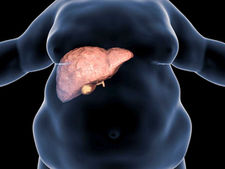
Abdominal and Inguinal Hernia
Hernia, which our hospital's general surgery clinic deals with and which is one of the reasons why our patients visit us, can occur as hernias in the umbilical and groin areas.
Umbilical Hernia: The protrusion of the intestine and fatty tissues through the muscles from an area close to the belly button is called an umbilical hernia. This disease, which is common in babies, is harmless and can go away on its own. If seen in adults, it requires surgical intervention. The causes of hernia may be chronic constipation, having undergone abdominal surgery, excess weight that causes pressure and pressure on the abdominal muscle area, pregnancy and heavy sports. Depending on the size of the umbilical hernia, a phenomenon called hernia strangulation is not common, but it may occur. A strangulated hernia can cause fever, rash, nausea and vomiting, and cause blood circulation problems.
What are the Symptoms of Umbilical Hernia?
Symptoms of an umbilical hernia in babies may include the belly button protruding when the baby cries, and symptoms in adults may include a permanent and painful swelling. Diagnosis and Treatment of Umbilical Hernia Umbilical hernia can be easily detected during a physical examination. For a clearer diagnosis, ultrasound and x-ray techniques can be used. After diagnosis, treatment planning may include pushing the hernia back in babies. Surgery is recommended to prevent problems that may develop as an umbilical hernia treatment in adults. An incision is made next to the belly button, the hernia is pushed into the abdominal cavity, and depending on the hernia, reinforcement can be made with patches. Inguinal Hernias An inguinal hernia, a common type of hernia, is the protrusion of a part of the intestines or through the abdominal membrane and protrudes from under the skin. It is caused by the weakening of the tissues between the inner abdominal area and the groin area. It becomes visible when sneezing, coughing and straining. It is a disease more common in men than in women. Inguinal hernia can restrict the movement of individuals. Some previous surgeries, weakness in the abdominal wall, increased abdominal pressure, advanced age, heavy physical activity, constipation and pregnancy are among the factors that can cause inguinal hernia. Similar to an umbilical hernia, if left untreated, hernia strangulation may occur.
What are the symptoms of inguinal hernia?
Inguinal hernia may bring other complaints. Symptoms of the disease may appear as swelling in the hernia area, redness, bruising and gas, nausea, vomiting, loss of appetite and fever. Diagnosis and Treatment of Inguinal Hernia: For the diagnosis of inguinal hernia, first a physical examination is performed by the doctor, and then imaging techniques, i.e. ultrasound, can be performed for more detailed examination. Inguinal hernia is a disease that requires surgery in adults and children. During the surgical operation, the stuck organ part is removed from the hernia sac. If the hernia is small, surgery can be performed under local anesthesia, and if it is more serious, surgery can be performed under general anesthesia. Depending on the condition of the hernia and the patient, open or closed laparoscopic surgery can be performed. After the surgery, movements that will strain the body and groin area should be avoided. After the examination, our general surgeon will diagnose the disease and help you by determining the most appropriate treatment method.
FOR INFORMATION AND APPOINTMENT, YOU CAN LEAVE YOUR NUMBER OR ASK OUR EXPERTS
YOU CAN LEAVE YOUR NUMBER FOR INFORMATION AND APPOINTMENT AND ASK QUESTIONS TO OUR EXPERTS



-04.png)
-06.png)
-05.png)
-08.png)
-07.png)























